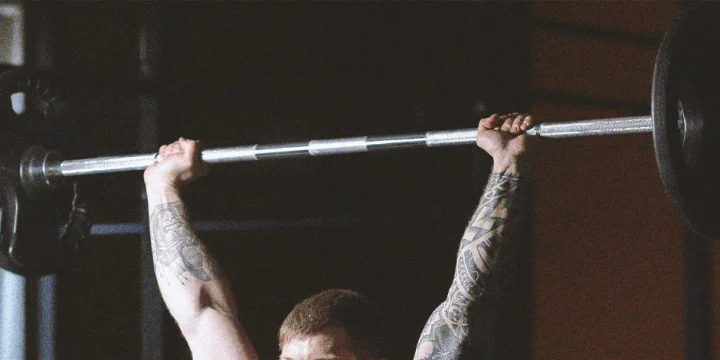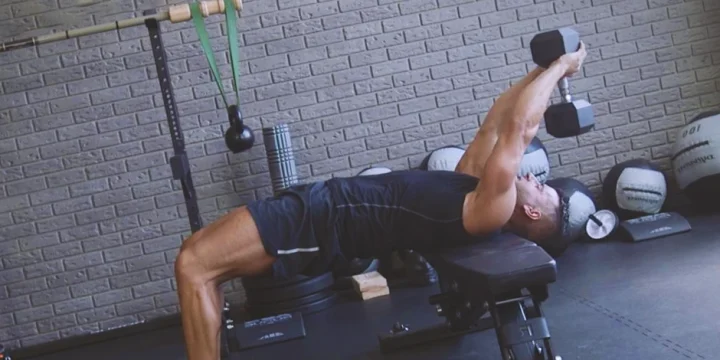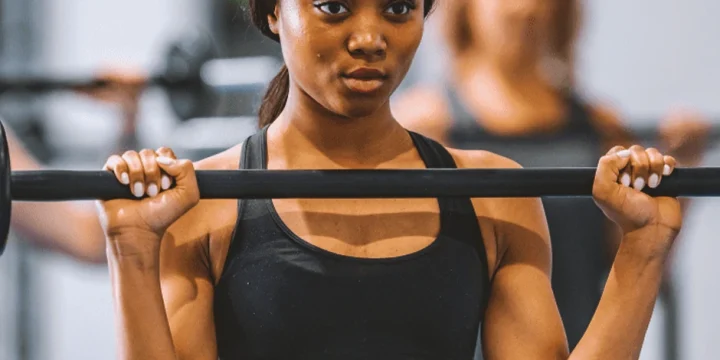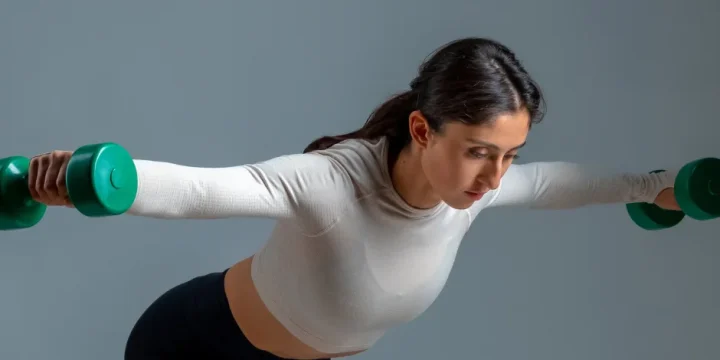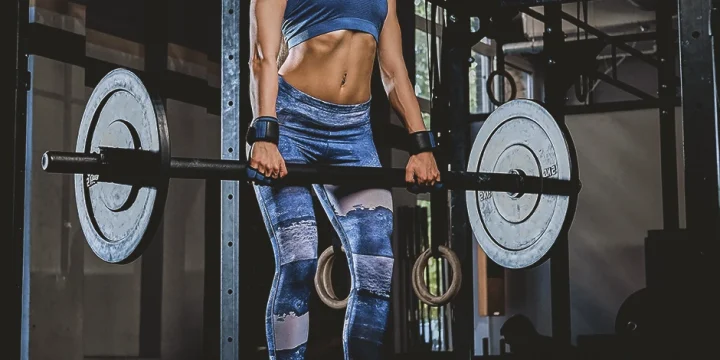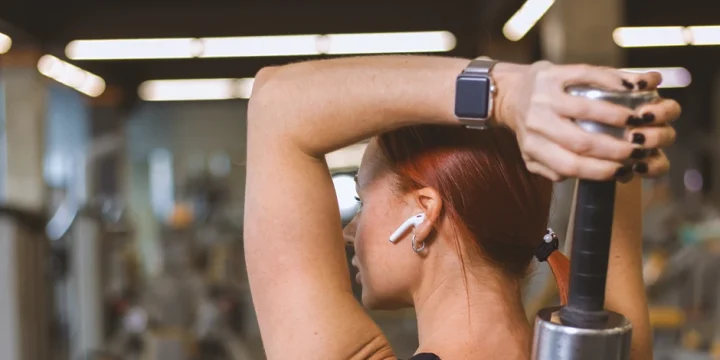As a seasoned fitness coach, I often advise clients to include dumbbell front raises in their workouts and emphasize the importance of maintaining proper form for successful muscle definition.
To offer guidance, I conducted extensive research and consulted with fellow trainers to identify the correct form for the dumbbell front raise.
This article compiles our findings, covering the benefits, muscles worked, variations, and common mistakes to avoid during the exercise.
Quick Summary
- To perform the dumbbell front raise correctly, begin by lifting the weights while inhaling, and pause briefly when your hands are parallel to the floor.
- When done accurately, the dumbbell front raise can result in a well-defined body and improved strength to continue with challenging gym routines.
- According to a National Institute of Health study, the anterior deltoid, or front shoulder muscle, showed increased activity during the lifting phase, especially in exercises like the dumbbell front raise.
- As a fitness trainer, I've found that the dumbbell front raise works wonders for clients with limited shoulder mobility, especially when complemented with high-quality supplements.
How To Perform Dumbbell Front Raise

To perform this correctly, I recommend clients stick to moderate-to-low weights. Using proper technique with light to medium weights and doing moderate to high repetitions helps target the muscles without straining your shoulder joint.
Here's how you do it:
- Start by placing the dumbbells in front of your thighs with your palms down.
- Stand tall, keeping your arms straight, shoulders relaxed, and away from your ears.
- Lift the weights in front of you, maintaining a slight bend in your elbows and shoulder-width distance between them.
- Keep a downward grip with your palms and raise the dumbbells to shoulder level.
- Pause briefly without using any momentum or hip movement.
- Then, resist the urge to lower the weights quickly, instead opting for a controlled three to four-second descent.
- Make sure not to let the dumbbells rest on your thighs between reps.
- Repeat the motion for the necessary number of reps after returning the weights to the starting position.
In my training sessions, I often guide clients to pick the grip that feels right for them in this exercise, whether it's a supinated (underhand) grip or a pronated (palms down) grip.
5 Dumbbell Front Raise Variations

Performing this exercise offers various options tailored to your goals and fitness level.
1. Front Dumbbell Raise with Hammer Grip
Opt for a hammer grip, similar to a hammer curl, by holding the dumbbells with palms facing each other instead of resting flat on the thighs. This variation can help prevent shoulder impingement.
2. Barbell Front Raise
Differing from lateral raises, you can also use a barbell for this exercise, following the same procedure as with dumbbells. Begin with lighter weights (or none) to familiarize yourself with the barbell motions.
3. Seated Dumbbell Front Raise
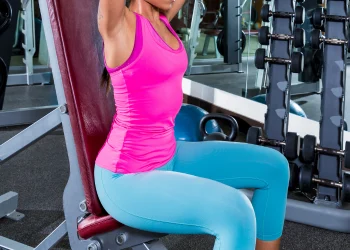
If standing is challenging, try this exercise seated on a bench or chair. Maintain a straight back and engage your abs during the seated dumbbell raise. Gradually increase the weight if you can lift without strain or tension.
4. Single-Arm Dumbbell Front Raises
Alternate lifting and lowering each arm or perform alternating dumbbell front raises. According to PubMed research, unilateral training, focusing on one side of the body at a time, is associated with greater strength development [1].
Related: Dumbbell Arm Workouts for Building Muscle
5. Unstable Dumbbell Front Raise
Challenge your balance and core by performing this exercise on a stability disc. However, attempt this variation only after mastering the technique during a regular dumbbell front raise.
What Is a Dumbbell Front Raise?

A dumbbell front raise, also known as a front or shoulder front raise, is a weight workout specifically targeting the shoulders and upper chest muscles.
Typically done with dumbbells, this basic exercise involves standing and lifting weights.
In my training sessions, I often guide clients to perform the dumbbell front raise, which, despite its name, allows for flexibility. If necessary, we switch things up and use kettlebells instead of dumbbells.
"This stimulation produces muscle fiber contraction, which results in muscle fiber breakdown. This, in turn, causes the muscle groups in your shoulders, arms, and chest to develop and expand."
- Daniel Bubnis, National Academy of Sports Medicine (NASM) Certified Personal Trainer
The Muscles Worked

The front raise primarily targets the shoulder muscles, providing a shoulder flexion isolation exercise to enhance strength and shape on all sides of the shoulders.
Deltoid
The deltoid, the primary muscle in shoulder workouts, consists of three heads: the lateral or side deltoid, the posterior or back deltoid, and the anterior or front deltoid, identified by the National Institute of Health [2].
Each section serves a specific purpose, collectively contributing to shoulder-arm mobility.
The posterior delt assists in arm extension, horizontal abduction, and external rotation, as stated by PubMed [3].
The anterior deltoid, connecting to the clavicle, facilitates forward arm movement, according to the Journal of Anatomy [4].
The lateral deltoid, beside the anterior deltoid, aids in moving the arms sideways and away from the torso, also facilitating up-and-down arm movements, as per PubMed [5].
Also Read: Best Anterior Deltoid Exercises
Upper and Lower Traps

The trapezius muscles play a key role in moving and stabilizing the shoulder blades, contributing to proper posture and movement. As per the National Institute of Health, trap muscles also assist in tilting the neck upwards, downwards, and sideways due to their direct association with the spine and neck [6].
Pectoralis Major
The dumbbell front raise engages the pectoralis major, which forms one-half of the chest's pec muscle groups. According to research from the same institute, the pectoralis major's main functions involve arm flexion, adduction, and rotation, playing a crucial role in arm movements [7].
Dumbbell Front Raise Benefits

Front raises may not appear much, as you'll employ such light weights. However, with an intense eccentric portion, this activity goes a long way.
Bigger Shoulders
Although limiting heavy weights, dumbbell front raises are effective for shoulder muscle development, specifically targeting the anterior deltoid. The goal is to engage and stimulate this muscle, leading to muscle fiber breakdown, healing, and growth.
Bigger Chest
Front raises engage the anterior deltoid and the pectoralis major, simultaneously working on the chest and shoulders. The dumbbell front raise is a highly effective workout for faster upper-body growth compared to other shoulder exercises.
More Mobility
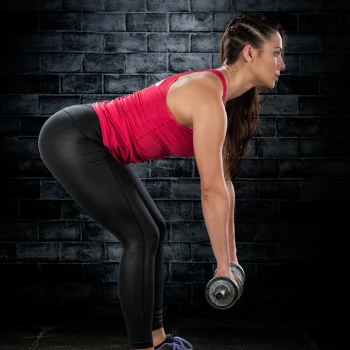
For maximum benefit from the dumbbell front raise, rotate your shoulder joint through the entire range of motion. This continual rotation strengthens your shoulder joints, enabling effortless actions within that range. Dumbbell front raises are ideal for individuals with reduced shoulder mobility or those seeking to prevent shoulder issues.
Improved Performance
Proper upper body strength is essential for various activities, from calisthenics to weighted workouts. The dumbbell front raise targets key upper body muscles, including the shoulders, arms, upper back, and upper and secondary chest muscles, improving overall movement.
In my training experience, building strength in these muscles speeds up my clients' journey toward their fitness goals, giving them the power to take on more demanding workouts.
Related:
Common Dumbbell Front Raise Mistakes

"The front raise is not intended to be a momentum-inducing bridge between the dumbbell swing and the shoulder action. By tensing the glutes, core, and shoulder blades, you can remove the swing and make it all shoulder."
- Ebenezer Samuel, Certified Strength & Conditioning Specialist
Position of the Wrist: Keep your wrists straight and avoid twisting them up or down. If you can't maintain a neutral stance, the weight is too heavy.
Rocking: When performing this exercise, maintain a firm and steady torso, avoiding any wobbling or rocking. If you find yourself wavering or rocking back on the heels, opt for a smaller weight.
Excessive Weight: Avoid using weights that lead to failure after a set. Excessive shoulder loading can cause joint tension and damage.
Poor Form: Ensure a straight back and engage your abdominals; avoid rounded backs or slack abs. This not only keeps you safe from harm but also enhances your ability to target specific muscles.
FAQs
Are Dumbbell Front Raises Effective?
Yes, dumbbell front raises are effective. Front dumbbell raises are an excellent approach to enhancing upper-body strength, shoulder stability and mobility, and injury prevention.
How Many Front Raises Should I Do?
You should do 8 to 16 repetitions of dumbbell front raises, aiming for one to three sets. Adjust the weight to ensure proper form and challenge yourself within this range for an effective shoulder workout.
Which Grip Is Best for Front Raises?
The best grip for front raises is the hammer grip. It's impossible to achieve uniformly developed shoulders without adopting this specific method to delt training.
References:
- https://pubmed.ncbi.nlm.nih.gov/26348920/
- https://www.ncbi.nlm.nih.gov/books/NBK537056/
- https://pubmed.ncbi.nlm.nih.gov/8222457/
- https://www.ncbi.nlm.nih.gov/pmc/articles/PMC3042752/
- https://pubmed.ncbi.nlm.nih.gov/24947920/
- https://www.ncbi.nlm.nih.gov/books/NBK518994/
- https://www.ncbi.nlm.nih.gov/books/NBK525991/
About The Author
You May Also Like
